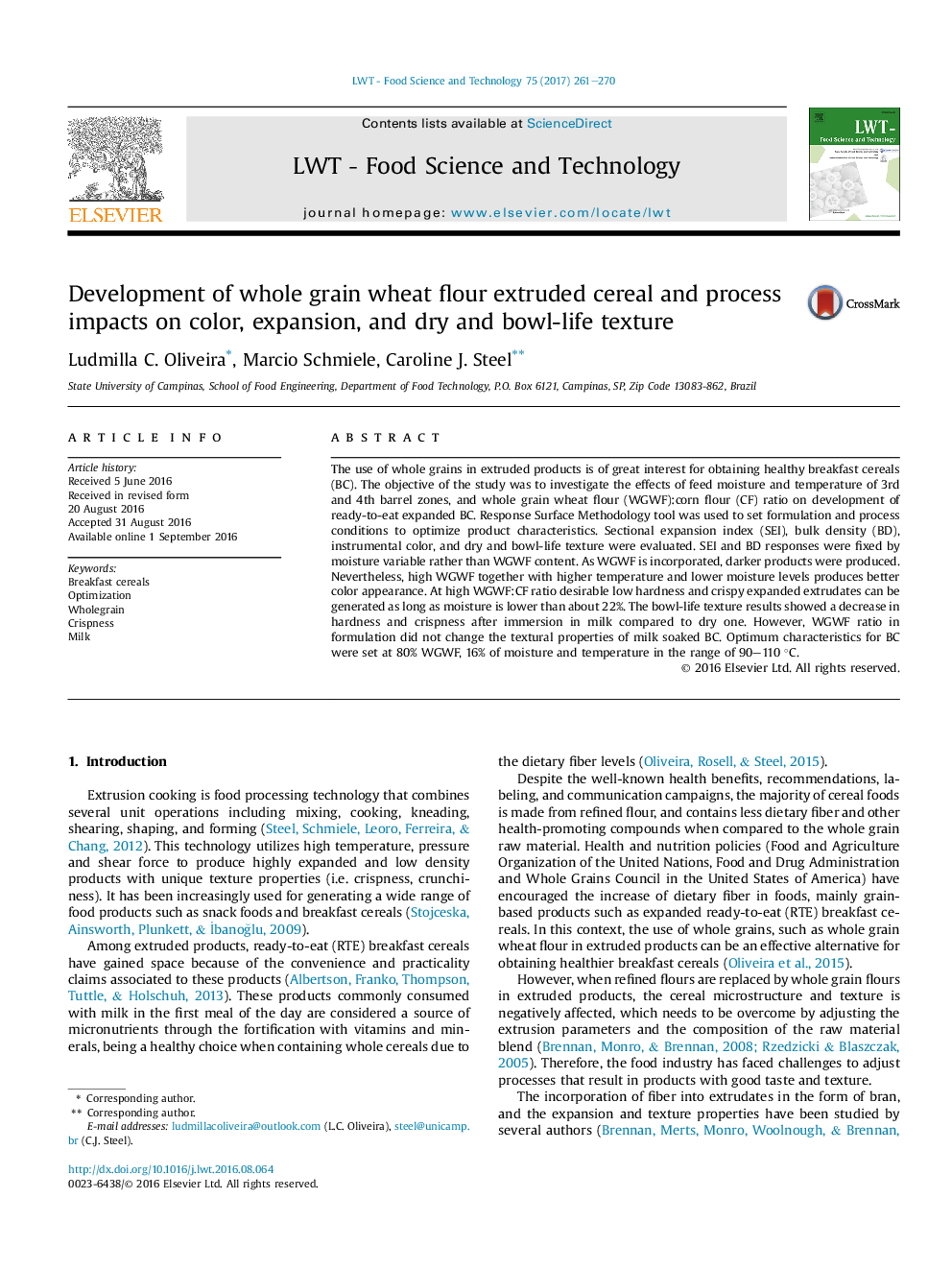| Article ID | Journal | Published Year | Pages | File Type |
|---|---|---|---|---|
| 6400177 | LWT - Food Science and Technology | 2017 | 10 Pages |
â¢Response surface methodology provided good approach to technological evaluation of extrudates.â¢Kramer cell showed good performance in bulk texture analysis of dry and soaked milk extrudates.â¢Texture of soaked milk extrudates was not damaged by whole grain wheat flour (WGWF) ingredient.â¢Exploring of responses as function of experimental levels enables optimization at high WGWF ratio.â¢Extrusion technology provides alternatives to obtain dietary fiber enriched breakfast cereals.
The use of whole grains in extruded products is of great interest for obtaining healthy breakfast cereals (BC). The objective of the study was to investigate the effects of feed moisture and temperature of 3rd and 4th barrel zones, and whole grain wheat flour (WGWF):corn flour (CF) ratio on development of ready-to-eat expanded BC. Response Surface Methodology tool was used to set formulation and process conditions to optimize product characteristics. Sectional expansion index (SEI), bulk density (BD), instrumental color, and dry and bowl-life texture were evaluated. SEI and BD responses were fixed by moisture variable rather than WGWF content. As WGWF is incorporated, darker products were produced. Nevertheless, high WGWF together with higher temperature and lower moisture levels produces better color appearance. At high WGWF:CF ratio desirable low hardness and crispy expanded extrudates can be generated as long as moisture is lower than about 22%. The bowl-life texture results showed a decrease in hardness and crispness after immersion in milk compared to dry one. However, WGWF ratio in formulation did not change the textural properties of milk soaked BC. Optimum characteristics for BC were set at 80% WGWF, 16% of moisture and temperature in the range of 90-110 °C.
